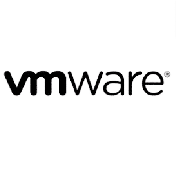Seminarinhalt
Mithilfe von Microsoft Power Platform können Organisationen ihre Abläufe optimieren, indem sie Geschäftsaufgaben und -prozesse vereinfachen, automatisieren und transformieren.
In diesem Training erfahren die Trainingsteilnehmer*innen, wie Sie Power Apps erstellen, Abläufe automatisieren und die Plattform erweitern, um Geschäftsanforderungen zu erfüllen und komplexe Geschäftsprobleme zu lösen.
In diesem Training erfahren die Trainingsteilnehmer*innen, wie Sie Power Apps erstellen, Abläufe automatisieren und die Plattform erweitern, um Geschäftsanforderungen zu erfüllen und komplexe Geschäftsprobleme zu lösen.
Programm
Use imperative development techniques for canvas apps in Power Apps
- Imperative versus declarative development
- The three types of variables in Power Apps
- Global variables
- Contextual variables
- Collections
- Additional variable concepts
- Sometimes you need something more than forms
- Use the Patch function to create and edit records
- Delete records from data sources and collections
- Use the Patch function to update a Gallery
- Filter Dataverse choice columns with Power Fx formulas
- Modify choice and choices values
- Work with one-to-many relationships
- Work with many-to-many relationships
- What is relational data?
- Work with relationships in Power Apps
- Functions, predicates, and data sources combine to determine delegation
- Delegation warnings, limits, and non-delegable functions
- The importance of thinking about performance
- Improve performance with data sources
- Testing and troubleshooting your app
- Use Monitor to troubleshot app start performance issues
- Optimize App.OnStart
- Data load strategies
- Identify and resolve common problems
- Collaborate by using Monitor
- Set up an app for Application Insights
- View Application Insights data
- Custom logging with trace
- Introducing Power Automate
- Create your first flow
- Introduction to expressions
- Get started with expressions
- Notes make things easier
- Types of functions
- Write complex expressions
- Dataverse triggers
- Query data
- Create, update, delete, and relate actions
- Introduction to Microsoft Power Platform for developers
- Overview of Dataverse and the Common Data Model
- Extending Power Platform with Azure
- Power Platform environments
- Introduction to developer Power Platform tooling
- Solutions overview
- Deploy apps with Package Deployer
- User experience extensibility
- Dataverse extensibility
- Determine when to configure or when to code
- Introduction to the Microsoft Dataverse Web API
- Insomnia
- Authenticate against Microsoft Dataverse using OAuth
- Use OData to query data
- Use FetchXML to query data
- Call Power Automate actions from the Web API
- Use the Web API to impersonate another user
- Track entity data changes with change tracking and the Web API
- Introduction to client-side scripting
- Upload scripts
- Event handlers
- Context objects
- Client scripting common tasks
- Introduction to conducting global operations with the client API Xrm object
- Client scripting best practices
- Debugging client script
- Introduction to Power Apps component framework
- Power Apps component framework architecture
- Power Apps component tooling
- Component manifest
- Demo of the Power Apps code component
- Introduction to creating a code component
- Create a code component solution package
- Test and debug code components
- Introduction to developing with Microsoft Dataverse
- Microsoft Dataverse extensibility model
- Event framework
- Microsoft Dataverse Azure Solutions overview
- Expose Microsoft Dataverse data to Azure Service Bus
- Write a Service Bus Event Listener that consumes Microsoft Dataverse messages
- Publish Microsoft Dataverse events with webhooks
- Write an Azure Function that processes Microsoft Dataverse events
- Introduction
- Explore Azure Functions development
- Create triggers and bindings
- Connect functions to Azure services
- Demo of the maker portal experience
- Explore custom connector configuration options
- Introduction
- What are custom connectors
- What is OpenAPI and why you should use it
- Test the custom connector
- Introduction
- Authentication options
- Use APIs with Azure AD
- Configure Microsoft Entra ID authentication
- Use expressions to access runtime values
- Use policies for data conversion
- Configure host URL and routing
- Add or update values
- Use OpenAPI extensions
- Use the dynamic list of values extension
- Use dynamic schema
- Add and remove apps, flows, and entities in a solution
- Edit a solution-aware app, flow, and table
- Build and deploy a complex solution with flows, apps, and entities
- Automate solution management
- Introduction
- Solution layering
- Solution architecture tools and techniques
- Use version control for solutions
Zielgruppen
Kandidat*innen für diesen Training entwerfen, entwickeln und schützen Power Platform-Lösungen und kümmern sich um die Behandlung entsprechender Probleme. Die Kandidat*innen implementieren die Komponenten einer Lösung, zu denen Anwendungserweiterungen, individuelle Benutzererlebnisse, Systemintegrationen, Datenkonvertierungen, benutzerdefinierte Prozessautomatisierung und benutzerdefinierte Visualisierungen gehören. Den Kandidat*innen werden praktische Kenntnisse zu Power Platform-Diensten vermittelt – einschließlich eines umfassenden Verständnisses der Funktionen, Grenzen und Einschränkungen.
Kandidat*innen müssen über Entwicklungserfahrung in folgenden Bereichen verfügen: JavaScript, JSON, TypeScript, C#, HTML, .NET, Microsoft Azure, Microsoft 365, RESTful Web Services, ASP.NET und Power BI.
Kandidat*innen müssen über Entwicklungserfahrung in folgenden Bereichen verfügen: JavaScript, JSON, TypeScript, C#, HTML, .NET, Microsoft Azure, Microsoft 365, RESTful Web Services, ASP.NET und Power BI.
Vorkenntnisse
- JavaScript
- JSON
- TypeScript
- C#, HTML
- .NET, Microsoft Azure
- Microsoft 365
- RESTful Web Services
- ASP.NET und
- Power BI
Bestandteil von
Wichtige Information
Dieses Training behandelt prüfungsrelevante Themen zum Exam PL-400: Microsoft Power Platform Developer
HINWEIS:
Um während des Trainings an den Übungen teilnehmen zu können, ist eine Multi-Faktor-Authentifizierung (MFA) erforderlich. Dafür benötigen Sie ein Mobiltelefon und eine Authentifizierungs-App. Wir empfehlen die kostenlose Microsoft Mobile Phone Authenticator App.
Download Microsoft Mobile Phone Authenticator App.
Set up your Microsoft 365 sign-in for multi-factor authentication.
HINWEIS:
Um während des Trainings an den Übungen teilnehmen zu können, ist eine Multi-Faktor-Authentifizierung (MFA) erforderlich. Dafür benötigen Sie ein Mobiltelefon und eine Authentifizierungs-App. Wir empfehlen die kostenlose Microsoft Mobile Phone Authenticator App.
Download Microsoft Mobile Phone Authenticator App.
Set up your Microsoft 365 sign-in for multi-factor authentication.



Die Vortragende war sehr mitreißend und hat die Inhalte gut und interaktiv aufbereitet
Microsoft Power Platform Developer
27.11.2023Die Vortragende war sehr mitreißend und hat die Inhalte gut und interaktiv aufbereitet
— Lukas E.Super Trainerin. Hat die Themen absolut toll rübergebracht!
Microsoft Power Platform Developer
17.11.2023Super Trainerin. Hat die Themen absolut toll rübergebracht!
— Michael P.sehr gut
Microsoft Power Platform Developer
04.09.2023sehr gut
— Andreas R.